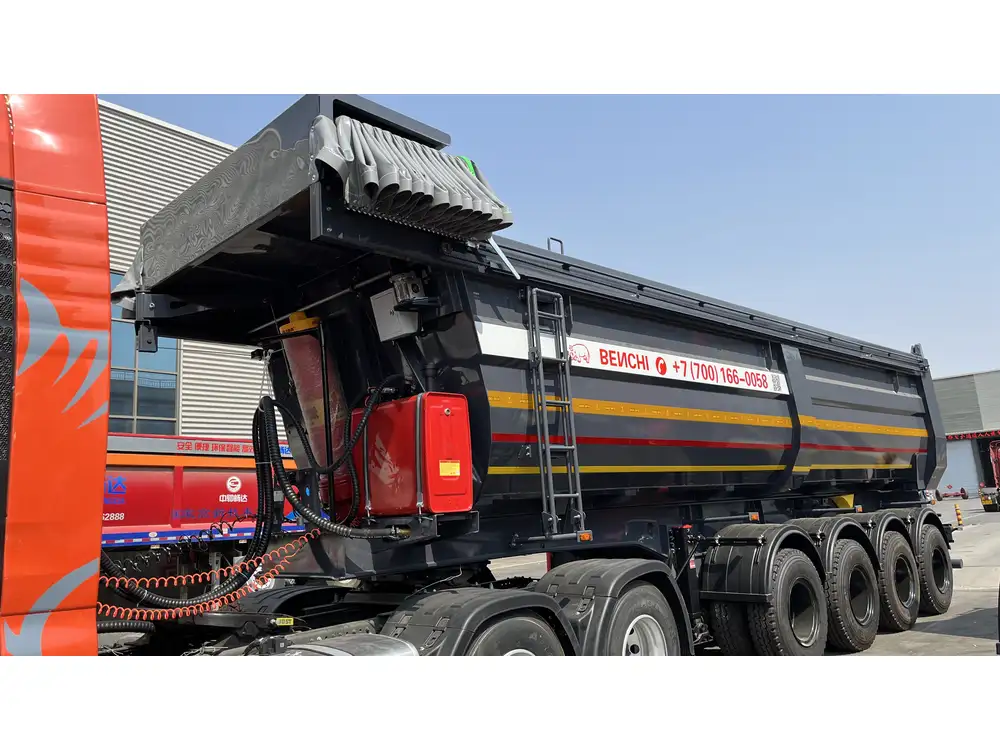Flatbed trailers have long been a backbone of freight transportation across various industries. In an era where efficiency and adaptability are paramount, understanding the dimensions of standard flatbed trailers, particularly their width, remains crucial for logistics and transport operations. This article aims to dissect the complexities surrounding the width of standard flatbed trailers while addressing critical user queries related to their specifications, compatibility, and operational considerations.
What is a Flatbed Trailer?
A flatbed trailer is a versatile piece of equipment designed to carry diverse cargo. Unlike enclosed trailers, flatbeds provide unrestricted access to the load from all sides, making them ideal for oversized, heavy, or irregularly shaped items. Available in a multitude of configurations, flatbed trailers accommodate a wide range of industries, from construction to agriculture.
Key Features of Flatbed Trailers
- Open Design: Facilitates easy loading and unloading.
- Variability in Size: Ranges from smaller models, suitable for personal use, to larger, specialized designs for heavy-duty loads.
- Structural Integrity: Often constructed with robust materials to withstand dynamic loads.

What is the Standard Width of Flatbed Trailers?
General Specifications
The width of a standard flatbed trailer typically falls between 96 inches (8 feet) and 102 inches (8.5 feet). This range accommodates most freight regulations across various states and provinces, ensuring compliance with legal transportation guidelines.
| Flatbed Type | Width (Inches) | Width (Feet) |
|---|---|---|
| Standard Flatbed | 96 | 8 |
| Extended Width Flatbed | 102 | 8.5 |
Legal Considerations
When transporting loads, adhering to width regulations is paramount. Exceeding the standard width can result in hefty fines and operational delays.

State-by-State Regulations
- United States: Most states allow a maximum width of 102 inches for trailers without a permit. However, routes may vary, so checking local regulations remains essential.
- Canada: Similar to the U.S., Canadian provinces typically enforce a maximum width of 102 inches, though local variations exist.
Types of Flatbed Trailers and Their Dimensions
Understanding the different types of flatbed trailers is essential for proper application and usage.
1. Standard Flatbed Trailers
As mentioned, these trailers are typically 96 inches or 102 inches wide. They are optimal for general cargo transport, including construction materials and machinery.

2. Extendable Flatbed Trailers
These trailers can extend to accommodate oversized loads, generally reaching widths similar to standard flatbeds. Their length, however, can increase significantly.
| Type | Standard Width | Extendable Range (Inches) |
|---|---|---|
| Extendable Flatbed | 102 | Up to 53+ feet |
3. Step Deck Trailers
This design features a lower deck height, allowing for a wider array of loads. Standard width remains at 102 inches, though the height and dimensions vary based on the specific construction.
4. Gooseneck Trailers
These provide enhanced stability and maneuverability. The standard width mirrors that of other flatbed types, 102 inches, but the unique design allows for different load distributions.

Loading Capacity: Considerations Beyond Width
While width is an essential factor, it’s imperative to consider multiple aspects when it comes to loading:
Weight Capacity
Flatbed trailers are categorized by their weight capacity. Standard models often range from 48,000 lbs to 55,000 lbs.
Length Configurations
These trailers also come in various lengths, typically from 20 to 53 feet. Choosing the correct length impacts overall weight distribution and stability during transport.

Height Considerations
Higher loads could necessitate a different configuration altogether. While a flatbed remains stable, securing taller loads requires careful attention to federal height regulations (usually not exceeding 13.6 feet).
| Trailer Type | Weight Capacity | Length Range (Feet) | Height Limit (Feet) |
|---|---|---|---|
| Standard Flatbed | Up to 48,000-55,000 | 20-53 | 13.6 |
| Step Deck | Varies (Up to 45,000) | 20-48 | 13.6 |
| Extendable Trailer | Up to 70,000 | 30-53+ | 13.6 |
Choosing the Right Flatbed Trailer
Factors to Consider
When determining which flatbed trailer to utilize, multiple factors require evaluation:
- Type of Cargo: The dimensions and nature of the cargo will dictate the required trailer type. Oversized items may necessitate a gooseneck or extendable trailer.
- Regulatory Compliance: Understand the regulations governing trailer width and load limits in your operating areas. This can vary significantly across states or provinces.
- Load Configuration: Consider how the load distributes across the trailer. Centrifugally heavy items may require different placements to maintain stability.
- Height of the Load: Ensure compliance with height restrictions. If loading up to the height limit, assess additional securing measures.

Cost and Budget Considerations
Investing in a flatbed trailer has significant financial implications. The cost varies based on trailer type, size, and materials.
- Basic Flatbed Trailers: Prices often start from $15,000 and can go upward based on customizations.
- Specialty Trailers: For extendable or specific structural designs, costs may exceed $40,000.
Securing Your Load: Best Practices
Securing your cargo is paramount to ensure safe transportation. Use the following guidelines to effectively secure loads on flatbed trailers:
- Use Proper Tie-Downs: Employ chains and straps rated for the load’s weight. Ensure all tie-downs follow the manufacturer’s recommendations.
- Weight Distribution: Maintain an even weight distribution to prevent tipping during transport.
- Tarps for Protection: When necessary, utilize tarps to shield loads from the elements. This provides added security and compliance with some industrial regulations.
Final Thoughts
Understanding the dimensions, capabilities, and regulations surrounding standard flatbed trailers is essential for efficient logistics operations. By recognizing the standard width and exploring the various configurations available, businesses can streamline their transport efforts. When equipped with this knowledge, operators can enhance their decisions, improve load security, and ultimately ensure safer transportation practices.
By considering the aforementioned factors—from legal-width restrictions to optimal configurations—businesses can adapt to the challenges of modern logistics, securing their competitive edge in the industry.



